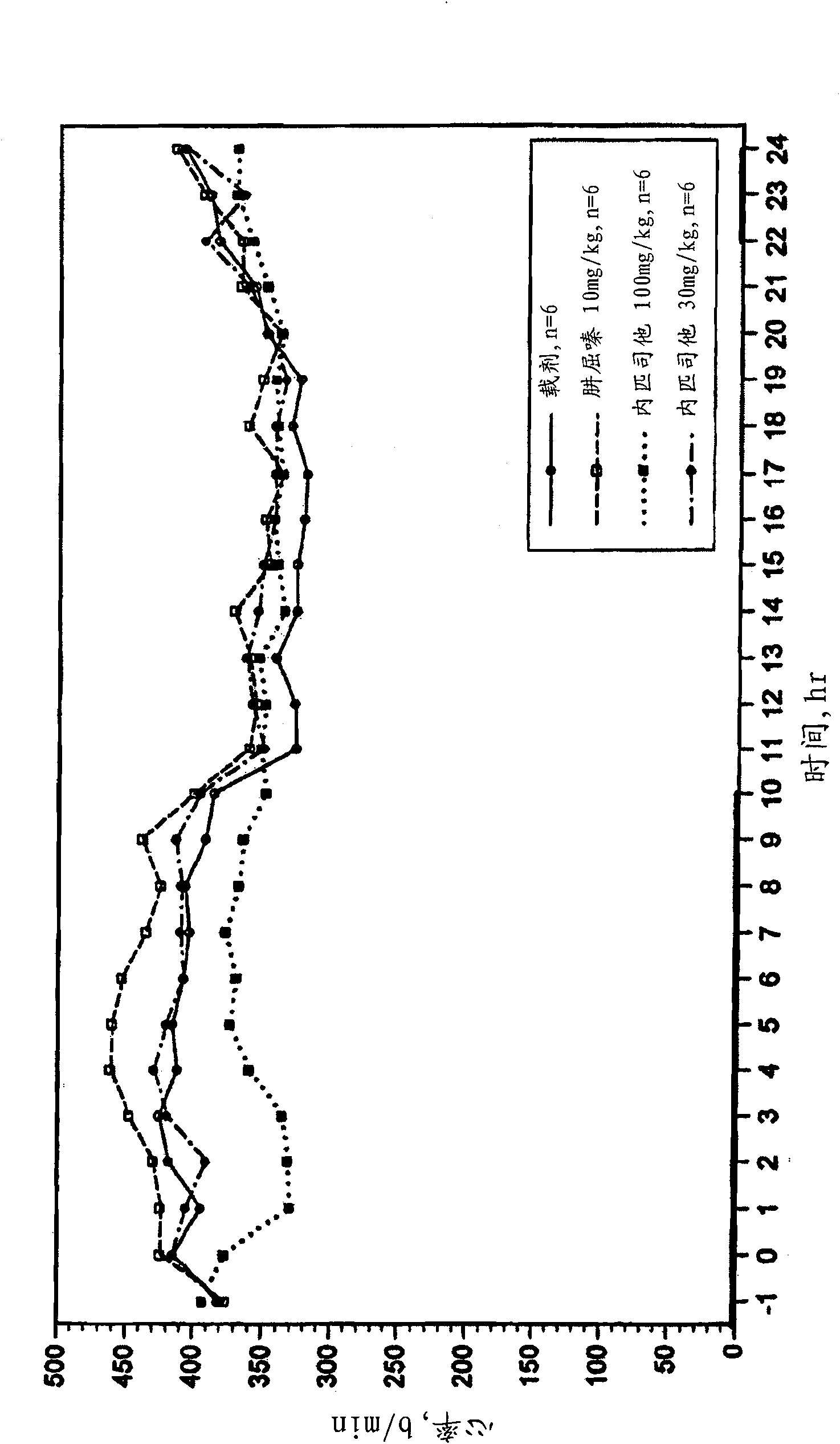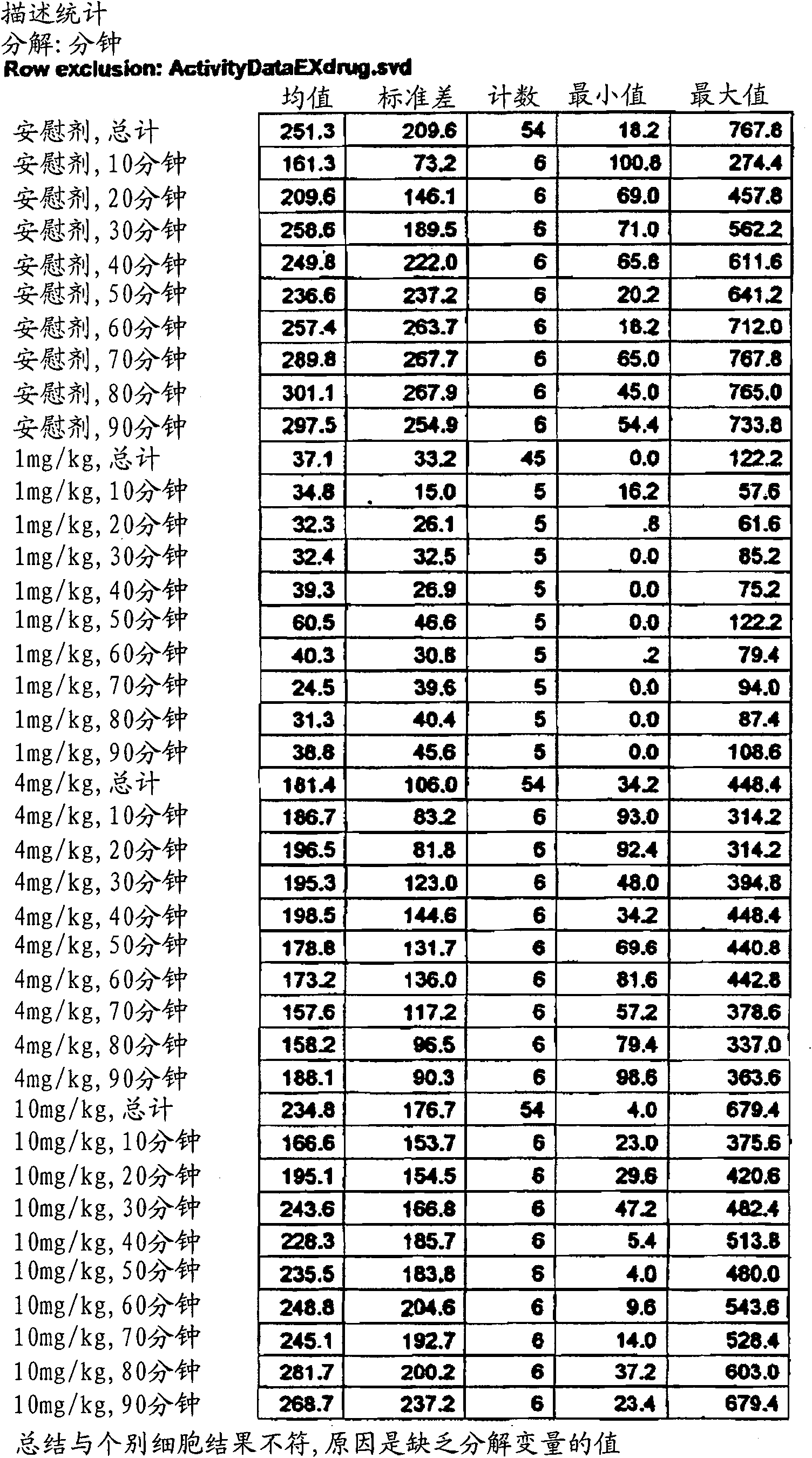Treatment of post-traumatic stress disorder
A technique for post-traumatic stress and disorders, applied in the field of inhibiting dopamine beta-hydroxylase, evaluating signs of post-traumatic stress disorder, and improving patient resilience
- Summary
- Abstract
- Description
- Claims
- Application Information
AI Technical Summary
Problems solved by technology
Method used
Image
Examples
Embodiment 1
[0364] A clinical study was conducted to demonstrate the efficacy and tolerability of Compound A in the treatment of post-traumatic stress disorder (PTSD).
[0365] The study design included an 8-week randomized, double-blind, placebo-controlled treatment trial of Compound A for the treatment of PTSD.
[0366] After signing informed consent and meeting inclusion / exclusion criteria, patients were randomized to receive Compound A or placebo for an 8-week period. During the study, the pharmacist kept records of the randomization and confirmed the order of placebo or Compound A (both are similar looking tablets). Patients were evaluated every two weeks for symptoms, side effects, and compliance.
[0367] Depending on the onset of symptoms and side effects, investigators may increase the drug in increments of 20-40 mg, as tolerated, until maximum therapeutic benefit is achieved. Dosing was once daily unless twice daily was better tolerated. Compliance was assessed by pill count ...
Embodiment 2
[0404] A clinical study was conducted to demonstrate the efficacy and tolerability of Compound A in the prevention of PTSD.
[0405] The study design included an open-ended randomized, double-blind, placebo-controlled treatment trial of Compound A for the prevention of PTSD. After signing informed consent and meeting inclusion / exclusion criteria, patients were randomized to receive Compound A versus placebo for an 8-week period. During the study, the pharmacist kept records of the randomization and confirmed the order of placebo or Compound A (both are similar looking tablets). Patients were evaluated every two weeks for symptoms, side effects, and compliance.
[0406] Depending on the onset of symptoms and side effects, investigators may increase the drug in increments of 20-40 mg, as tolerated, until maximum therapeutic benefit is achieved. Dosing was once daily unless twice daily was better tolerated. Compliance was assessed by pill count at weeks 4 and 8.
[0407] Pati...
Embodiment 3
[0445] A clinical study was performed to demonstrate the efficacy and tolerability of Compound A combination therapy in the treatment of PTSD.
[0446] The study design included an 8-week randomized, double-blind, placebo-controlled treatment trial of Compound A for the treatment of PTSD. After signing informed consent and meeting inclusion / exclusion criteria, patients were randomized to receive Compound A or placebo for an 8-week period. Patients also received therapeutically effective doses of prazosin, valproate, carbamazepine or topiramate in combination with compound A or placebo.
[0447] During the study, the pharmacist kept records of the randomization and confirmed the order of placebo or Compound A (both are similar looking tablets). Patients were evaluated every two weeks for symptoms, side effects, and compliance. Depending on the onset of symptoms and side effects, investigators increased the drug in increments of 20-40 mg, as tolerated, until maximum therapeuti...
PUM
 Login to View More
Login to View More Abstract
Description
Claims
Application Information
 Login to View More
Login to View More - Generate Ideas
- Intellectual Property
- Life Sciences
- Materials
- Tech Scout
- Unparalleled Data Quality
- Higher Quality Content
- 60% Fewer Hallucinations
Browse by: Latest US Patents, China's latest patents, Technical Efficacy Thesaurus, Application Domain, Technology Topic, Popular Technical Reports.
© 2025 PatSnap. All rights reserved.Legal|Privacy policy|Modern Slavery Act Transparency Statement|Sitemap|About US| Contact US: help@patsnap.com



